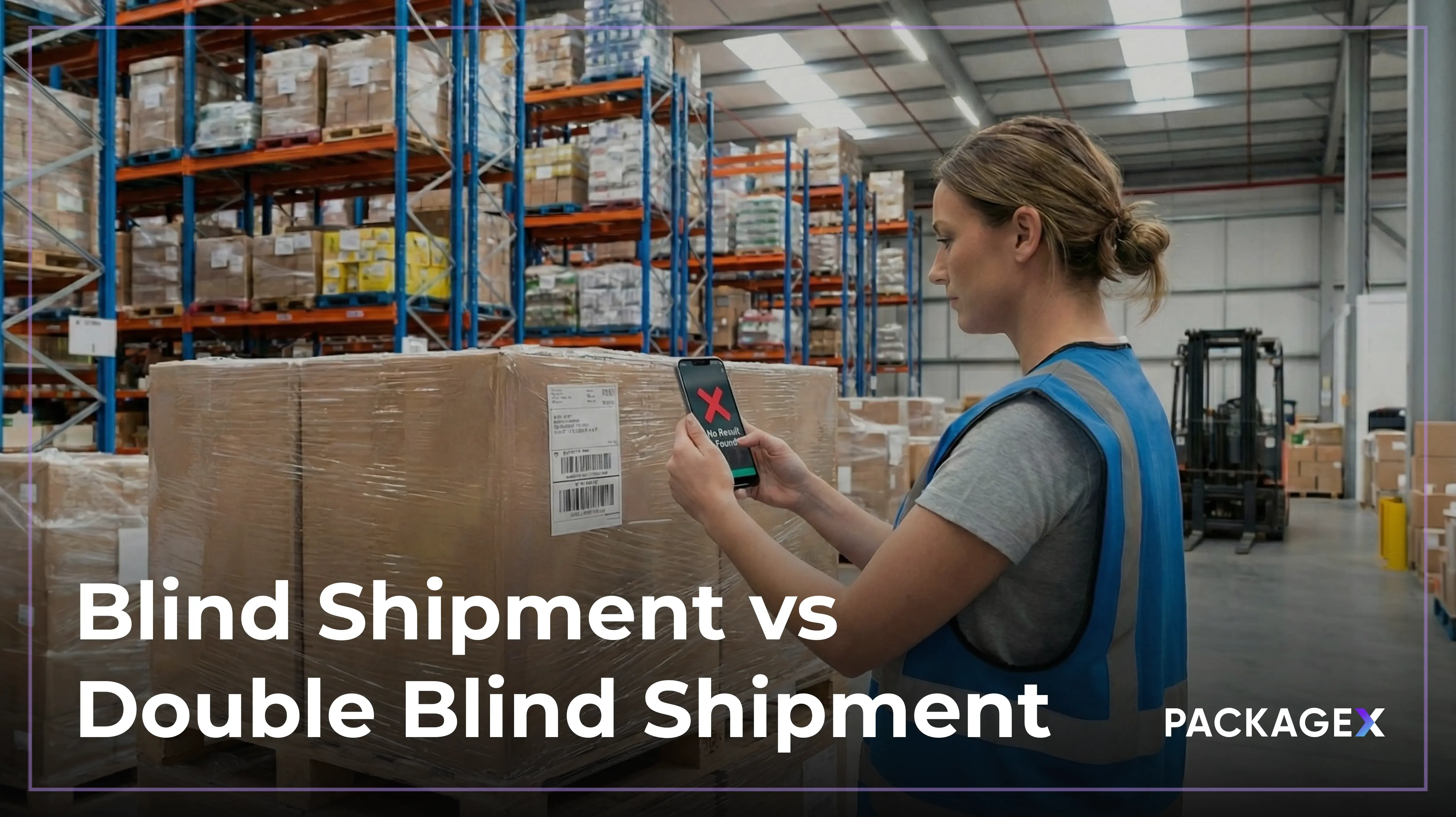U.S. transportation and warehousing sector hit a total revenue of $361 billion in Q1 2025, up 5.1% from Q1 2024.
Each shipment needs paperwork that matches the cargo with carriers and clears customs fast. That scale highlights how critical clean, accurate documentation is in every shipment.
Two of the most used documents in this chain are the bill of lading vs packing slip.
People often confuse these. One tracks legal responsibility. The other confirms what's in the box. Mixing them up can stall deliveries, trigger fines, or delay audits. This bill of lading vs packing slip distinction matters more than most realize.
This blog breaks down the differences between bill of lading vs packing slip, why both matter in U.S. logistics, and when to use each. If you're in shipping, retail logistics, warehousing, or compliance, this guide is built for you.
This guide will compare packing slip vs bill of lading and explain how to avoid common mix-ups that cost companies time and money.
What Is a Bill of Lading?
A bill of lading is a legal document that serves as proof that the seller has handed over the goods to the shipping carrier for transport. It acts as a receipt, a contract, and a title document, all in one. This paper or electronic record is issued by the carrier and must be signed by all parties involved:
- The shipper
- The carrier
- The receiver (consignee)
There are a few main types used in the US:
- Straight Bill of Lading
Used when goods are shipped directly to a specific recipient. It’s non-negotiable and doesn't allow transfer to another party. - Order Bill of Lading
Transferable and negotiable. The receiver can endorse it to another party. - Bearer Bill of Lading
The person in possession of the physical document is entitled to claim the goods. - Electronic Bill of Lading (eBOL)
Digital version recognized by U.S. Customs and Border Protection. Speeds up processing and reduces paperwork.
If you're looking for a bill of lading example, most freight companies provide standardized formats that comply with UCC Article 7 regulations in the United States.
What Is a Packing Slip?
A packing slip is a printed or digital document that lists the physical contents of a shipment. It typically includes product names, SKUs, quantities, weights, and other order-related details. Unlike a bill of lading, it’s not a legal document, and that’s a key part of the difference in the bill of lading vs packing slip debate.
This internal document is usually created by the warehouse or fulfillment team and used by:
- The shipper (to confirm fulfillment)
- The warehouse staff (to match orders)
- The receiver (to check for missing or damaged items)
A standard packing slip template may also show the order number, customer address, and internal notes. This helps cut down on errors during delivery and inventory checks. According to a survey, over 50% of U.S. warehouses still rely on printed packing slips for accuracy and verification.
A packing list shipping example often helps reduce disputes. If a customer claims an item is missing, the slip acts as physical proof of what was included. It's a critical part of internal logistics, even if customers never see it.
Key Differences: Bill of Lading vs Packing Slip
The following are a few key differences between a bill of lading vs packing slip that must be considered before deciding the right documents for your shipment.
1. Legal Status and Function
In any shipment, the bill of lading vs packing slip debate starts with legality.
Bill of Lading: A Legal Document
A bill of lading is a legally binding document provided by the carrier to the shipper, serving as a formal agreement between both parties. It confirms that the goods have been received and outlines terms for transport. It can also act as proof of ownership during transfer.
Packing Slip: Internal Use Only
A packing slip doesn’t hold legal value. It includes what's inside the package and lists what’s being shipped. It’s mainly used for inventory management and to confirm that the order was packed correctly.
2. Who Uses Each Document
Bill of Lading
BOL is used by shippers, carriers, customs officers, and freight forwarders. It’s required for releasing goods and clearing freight at ports or borders.
Packing Slip
Used by warehouse teams and receivers. It never leaves the package and isn't reviewed by external authorities.
3. What Each Document Includes
It’s important to know what information the bill of lading vs packing slip includes.
What’s in a Bill of Lading
- Names and addresses of the shipper and consignee
- Freight description and quantity
- Carrier name and mode of transport
- Terms and conditions of the shipment
- Tracking numbers and dates
What’s in a Packing Slip
- List of items in the shipment
- SKUs or item codes
- Quantities per item
- Weights or sizes (optional)
- PO or order reference
4. Shipping and Inventory Role
Bill of Lading: For the Freight Itself
This document moves with the freight. It’s essential for shipment accountability, contract enforcement, and customs.
Packing Slip: For the Goods Inside
This stays in the box. It helps teams on the receiving end verify they got what they ordered.
5. Issuing Parties
The bill of lading vs packing slip comparison also comes down to who creates each document. The carrier or their agent typically provides a bill of lading after the cargo has been loaded.
The packing slip, by contrast, is prepared by the seller or shipper and travels with the goods. It helps the buyer verify that what was sent matches what was ordered.
Comparison Table: Bill of Lading vs Packing Slip
When to Use Each Document
In the shipping process, both documents move goods forward. But the bill of lading vs packing slip difference lies in their roles and when they’re used.
When to Use a Bill of Lading
A bill of lading is used when goods are handed to a carrier. It confirms the carrier received the cargo and defines the terms for transport. It also acts as a legal contract and a document of title.
Use it:
- At pickup from the shipper
- For ocean, air, truck, or rail freight
- When clearing goods through customs
- When proving ownership or arranging delivery
This document is often used in audits or claims, particularly when damage occurs during transit.
When to Use a Packing Slip
The packing slip stays with the shipment. It’s prepared by the seller and used by the receiver. It lists the contents of the box, including items, SKUs, and quantities.
Use it:
- For order fulfillment checks
- During warehouse receiving
- To match invoices and verify delivery
- When importing goods, for inspection
A significant number of U.S. warehouse management systems rely on packing slips for daily inventory control. Missing slips cause shipment delays or miscounts.
In bill of lading vs packing slip comparison, a packing slip is not legally binding, but it's key in preventing inventory disputes.
Both documents support smooth logistics operations. Knowing when to use each one helps avoid errors and speeds up the shipping process.
Legal, Operational, and Compliance Implications
The Bill of Lading as a Legal Document
The bill of lading acts as a binding agreement between the shipper and the carrier. It confirms the transfer of goods and sets the terms of transport. In legal disputes or claims, this document often serves as proof of what was agreed and what was delivered.
The Packing Slip in Operational Workflow
Although not a legal document, the packing slip is essential for ensuring accuracy within the warehouse. It lists each product, its quantity, and often SKU or barcode information. This helps the receiver verify that the shipment matches the order.
Comparing the bill of lading vs packing slip, one controls the legal flow, the other supports accuracy in handling.
Compliance and Documentation Alignment
Customs and auditors often review shipping paperwork together. If the packing slip, invoice, and bill of lading don’t match, shipments can be delayed or flagged. Keeping these documents consistent helps avoid issues and maintains trust in the supply chain.
Common Misunderstandings: Packing Slip vs Bill of Lading
Many U.S. businesses still confuse key shipping documents. The confusion surrounding bill of lading vs packing slip is a frequent challenge in supply chain management.
In fact, according to a logistics report, a significant number of small exporters misidentify a bill of lading (BOL) as a shipping label or invoice, a mistake that can delay customs clearance and lead to fines.
A bill of lading serves as a contract for the transportation of goods. Carriers use a shipping label for tracking. They are not the same.
Packing slips are often misplaced during international shipping, especially when third-party logistics providers (3PLs) are involved. This causes inventory mismatches, delays at warehouses, and inaccurate delivery confirmations.
Another common error is using a BOL as proof of delivery. A signed delivery receipt or electronic confirmation is what counts. The BOL only confirms shipment, not receipt.
Streamline BOL and Packing Slip Accuracy with PackageX
PackageX helps teams handle and differentiate between shipping paperwork, like a bill of lading vs packing slip, without slowing down operations. Package X streamlines shipping document management, reducing the need for back-and-forth communication.
Here’s what PackageX offers:
- Smart Document Handling: Create and manage packing slips and bills of lading in one place. Reduce errors and simplify approvals.
- Real-Time Visibility: Track shipments from origin to destination with digital BOLs, timestamps, and delivery proof.
- Compliance: Build consistent, compliant documents using automation.
- Easy Integration: Connect with your WMS, ERP, or carrier accounts using flexible APIs and SDKs from PackageX.
FAQs
Is a bill of lading a proof of delivery?
Yes, when signed upon delivery, a bill of lading can serve as proof. It documents that goods were received as agreed. In the bill of lading vs packing slip context, only the BOL can confirm legal delivery status.
What's the difference between bill of lading and waybill?
The main difference between a bill of lading and a waybill lies in transferability. A bill of lading is a document of title, that can be used to transfer ownership of goods. A waybill is non-negotiable and is primarily used as a receipt and tracking document. In the context of bill of lading vs packing slip, both are official shipping documents, but a waybill is typically used in domestic or simplified logistics scenarios where title transfer is not needed.
Is the bill of lading the same as a packing slip?
No, they are different documents with distinct purposes. A bill of lading is a legal contract between shipper and carrier, while a packing slip lists the shipment contents. The bill of lading vs packing slip comparison shows that only the BOL holds legal weight in shipping.


_.webp)

